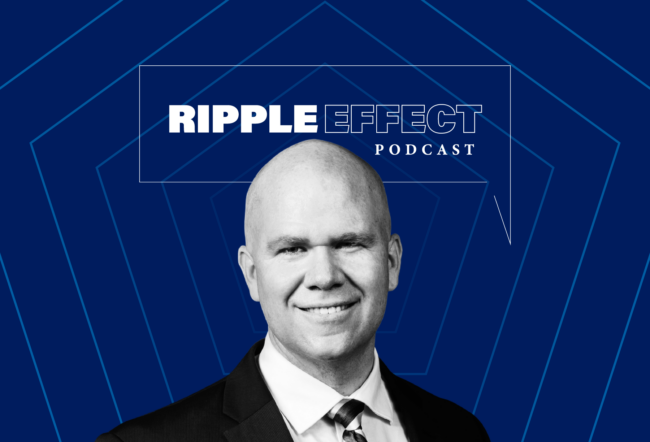These days, the global financial market offers little opportunity for investors. But there are oases in every desert, and in this case, manna can be found in Latin America. That’s the region that, for the time being, is suffering the least from the ongoing financial crisis. That fact, along with the engine of growth that Brazil has become, is enabling investors to find opportunities in Latin America that are unimaginable in Europe and the United States.
The figures speak for themselves. One Société Générale fund, known as the SGAM Fund/Equities Latin America, which invests throughout the region, enjoyed spectacular profitability of 40.98% during the first three months of 2009. The entire group of Deutsche Bank instruments focused on Brazil, known as DWS Invest Brazilian Equities, enjoyed profitability of more than 26% during the same period. Meanwhile, France’s Credit Agricole is also managing to offer clients gains of more than 20% in its institutional and classic funds focused on the Brazilian market.
Overall, 13 investment funds have closed the first quarter of the year with gains of more than 20%, and more than one hundred have profits of greater than 10%. In fact, only two funds focused on Latin America registered red ink this year. These are the vehicles of the EMIF Mexico family, which invests in variable income instruments in the country. The positive results of the region seem even more spectacular when you compare them with the situation in Europe and the United States. Following the disastrous year of 2008, topped off by the Madoff scandal, the beginning of this year continues to be marked by negative returns in the vast majority of funds. Not even the rebound in the stock market in March has managed to change the direction of investment funds in their two principal markets.
There are many reasons for these contrasts, and they can be summed up in two big points: On the one hand, the economies of Latin America are managing to ride out the storm better than Europe and the United States, from the macroeconomic point of view. On the other hand, in what might be considered a result of this, the region’s stock markets are moving along in a very positive way. In fact, the MSCI Latinoamerica index, which captures movements in all of the main Latin American markets, has gained 15% this year.
Obligations Met
The reasons why Latin America became an oasis amidst the global financial desert can be found in the past. In recent years, some countries of the region figured out how to meet their obligations and build their own protective shields that now enable them to better survive the global storm and shelter them from the disasters of more developed economies. Juan Carlos Martínez Lázaro, professor of environmental economics at the IE Business School, says, “It is surprising how Latin America is dealing with the crisis better than other economies. The normal thing would have been for it to suffer a great deal. The reason is that Latin America has improved its macroeconomic stability by introducing real fiscal controls. Many countries have generated primary surpluses; reduced indebtedness thanks to the boom in primary products; injected real monetary stability; and reduced poverty.”
This combination of measures has permitted the region to grow by an average of about 1.5% since 2004, according to Martínez Lázaro. This year, experts believe that the Latin American GDP could rise by another 1%. That figure is impossible to imagine in Europe and North America, which have suffered mightily from the recession. However, there are many Latin Americas, and for Martínez Lázaro, the best of them all is Brazil. His view is confirmed by the spectacular progress of investment funds in that country.
There is a direct relationship between the sound macroeconomic management of Lula and the country’s attractiveness for alternative investment mechanisms. Martínez Lázaro notes, “From the very start, Lula noted that his goal was to reduce social problems by increasing economic growth. And he has achieved that. Millions of Brazilians have emerged from poverty at the same time that Brazil has gone on improving its macro-economic indices. In fact, last year, its economy grew by 5.4%. This year, forecasts call for an additional 1.2%, a spectacular figure given the current global environment. And he has done it at the same time that he has reduced inflation and interest rates, and achieved primary surpluses.” In fact, over the past five years, Lula’s policies have resulted in a 20% reduction in the number of people who live below the poverty line.
All of these improvements are reflected in the movements of the Bovespa index, which tracks the major Brazilian companies. It rose 8.99% during the first quarter of 2009, after dropping last year by 41.22%. In contrast, the Spanish Ibex-35 suffered a plunge of 39.43%, and the Dow Jones Average dropped by 33.84%.
Early this year, Roberto Nemr, manager of the Brazilian investment firm Itaú AM, asserted that at specialized investment firms, “We have stopped being concerned about the global economic slowdown because Latin America benefits from growth in consumer demand. Now we must take advantage of the fiscal reforms that have taken place in recent years, which have been pursued to increase countercyclical measures in times of global instability. These two factors will translate into a slower deceleration compared with other countries.” Time has proven him correct.
In fact, the only Latin American economies that aren’t getting positive results are those that have not met their obligations in recent years. Bolivia and Venezuela, with their populist politics, head the group of the countries left behind. Mexico isn’t following in the positive path of the region either, although the reasons are very different from the two other countries. Mexico continues to be burdened by its excessive exposure to the U.S. economy, which purchases 80% of its exports. In addition, the lack of structural reforms in the country has made its Consumer Price Index continue to grow, despite the economic slowdown. Nor should we forget the fact that incomes have been reduced because of the decline in remittances that come, by and large, from Mexicans who immigrated to the United States.
An Oasis or a Mirage?
Even before the global financial crisis erupted, many economies in Latin America were already beginning to promote measures directed at providing incentives to investment funds. According to David Tuesta, chief economist of the Global Trends department at BBVA, and professor of economics at the Catholic University of Peru, this trend will continue after the economic storm dissipates. “Certainly, these countries will hope that financial markets will become more peaceful before establishing relevant reforms. But they will enact them, in any case, because they were [already] moving in that direction at an accelerated pace.”
In his opinion, “All the economic data shows that Latin America is the region that is doing the best job overcoming the financial crisis. This fact contrasts with the situation that these countries faced in previous periods of global tension. What you notice now, in most of the region, is a financial system that is healthy and resistant, with low risk of facing significant banking bankruptcies, as we have experienced on other continents.” According to Tuesta, this factor, along with the macroeconomic reforms carried out in many countries, enables confidence in investment funds — as well as alternatives like pensions — in the region.
Chile, Brazil and Mexico have the best prospects. “Fundamentally, Chile has a very active private pension fund market, both in terms of accumulation and its contributions. It is the oldest mandatory system, with 27 years of experience and a coverage ratio of more than 80% of the labor force. When it comes to size, Brazil and Mexico stand out for their opportunities, and their markets are also very attractive,” he adds.
Chile and the potential of its pension funds provides a first entry point for popularizing investment in alternative funds, which are also being driven by the strength with which the region is dealing with the crisis. There is a possibility that when the economy recovers, more forceful measures will once again be taken to attract investment. In other words, the growing interest of international managers in Latin America reflects, in the view of Tuesta, “the improvement of conditions in the market, in terms of the size and the number of potential clients, [already] experienced by the region. In addition, to a great extent, this has been driven by the broad participation of the private sector in mandatory pension plans.”
As a result, fund managers are becoming more and more interested in the Latin American market. Even in historically challenging years, they have continued to increase their number of clients, and their ownership has grown at an accelerated pace. Many of these investment firms are from Spain and focus on Latin American businesses because of the similarities of the two cultures, and the influence of the biggest Spanish banks in the Latin American financial structure.



